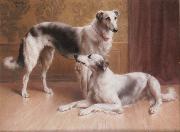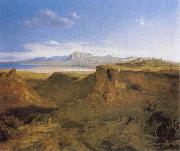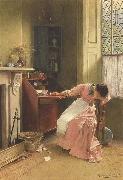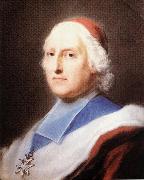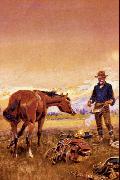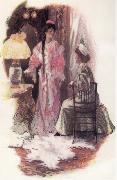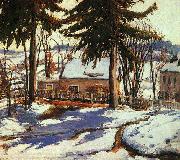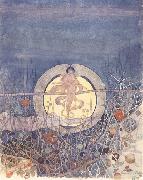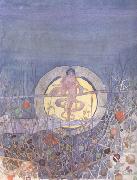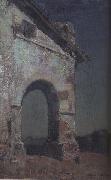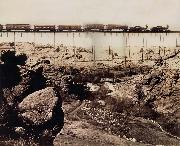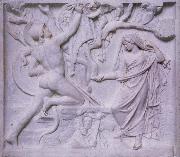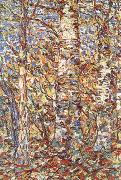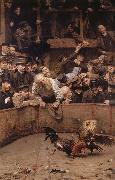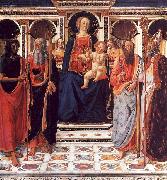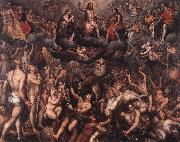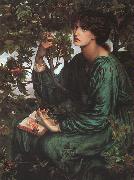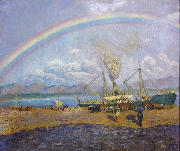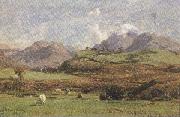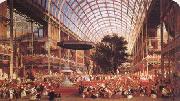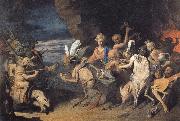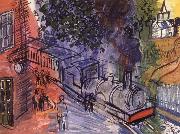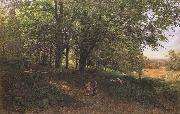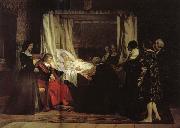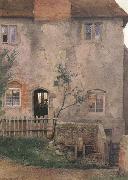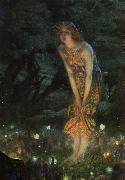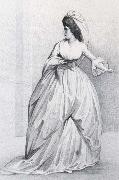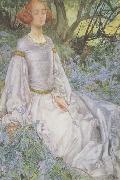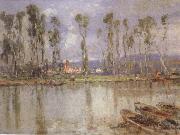|
|
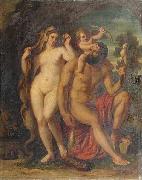 |
Carl Rahl
|
|
Carl Rahl, sometimes spelled Karl Rahl (13 August 1812 - 9 July 1865), was an Austrian painter.
Rahl was born in Vienna to Carl Heinrich Rahl (1779 - 1843), an engraver. He attended the Academy of Fine Arts Vienna and won a prize at the age of 19. From there he traveled to Munich, Stuttgart, Hungary, and in 1836 to Italy. He remained in Italy from 1836 to 1843, where he in particular studied representatives of the Venetian and Roman schools of art, and painted die Auffindung von Manfreds Leiche (1836).
Rahl's style, especially his views on color and perspective, were largely formed during his years in Rome. He returned after 1843 to Vienna for two years, and then led an itinerant life for the next five years, traveling through Holstein, Paris, Rome, Copenhagen, and Munich, making a living as a portrait painter. In this period he painted Manfreds Einzug in Luceria (1846), and die Christenverfolgung in den Katakomben.
In 1850, he was appointed professor at the Academy of Fine Arts Vienna, but for political reasons he was soon dismissed from the position. He then opened a private art school, which expanded quickly into a studio that produced monumental-scale paintings and enjoyed considerable success. He was commissioned by Greek philanthropist Simon Sinas to paint a number of works for the facade and vestibule of Vienna's Fleischmarkt Greek Church (Ludwig Thiersch being commissioned for the remainder of the frescoes), which was then being rebuilt by architect Theophil Freiherr von Hansen. In addition, Sinas commissioned four paintings depicting heroes of the Greek War of Independence, and a further four paintings to decorate his residence.
Rahl decorated the Heinrichshof in 1861 with personifications of Art, Friendship, and Culture, and the Palais Todesco with representations from the mythology of Paris. In 1864, he painted a number of allegorical figures in the stairway of the Waffenmuseum (now part of the Kunsthistorisches Museum). In this period he also painted several frescoes: Mädchen aus der Fremde (in a villa of Gmunden), a composition for a ballroom of a palace in Oldenburg, and a cycle from the tale of the Argonauts. Also, he painted the tympanum of the Athens Academy building, designed by Theophil von Hansen in 1859 and executed by Ernst Ziller (completed in 1885), and paintings in the portico of the Athens university, designed by Christian Hansen (Theophil Hansen's son). The central painting show Bavarian king Otto I surrounded by the Muses; the left hand fresco shows Prometheus bringing fire down from Mount Olympus. |
|
|
|
|
|
|
|
|
|
|
|
|
|
|
|
|
|
|
|
|
|
|
|
|
|
|
|
|
|
|
|
|
|
|
|
|
|
|
|
|
|
|
|
|
|
|
|
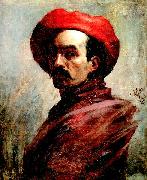 |
Cristobal Rojas
|
|
Cristobal Rojas (Cua, Miranda, 15 December 1857 e Caracas, 8 November 1890) was one of the most important and high-profile Venezuelan painters of the 19th century. Rojas's styles varied considerably throughout his life, and he displayed talents in painting that ranged primarily for dramatic effect, to works done in the Impressionist style.
Cristebal Rojas Poleo was born in the city of Cea in the Valles del Tuy to parents who worked in the medical profession. Part of his childhood occurred during the middle of the federal war (1859 - 1863) and Cea was particularly affected by the events of the war. He initiated studies under his grandfather, Jose Luis Rojas, who taught him how to draw and motivated him to improve. At 13 years old, his father died and he was forced to begin work in a tobacco factory in Cea to help support his family. In 1878, an earthquake devastated the Valles del Tuy region, and the Rojas faced poverty. As a result he moved to Caracas where he continued his painting studies, despite again having to work in the tobacco industry to support his mother and family.
In Caracas he attended classes by Jose Manuel Mauco at the Universidad Central de Venezuela. Between 1880 and 1882, he developed a keen interest in oils and displayed a primitive technique that would prevail in his later paintings such as Ruinas de Cea despues del Terremoto and Ruinas del templo de la Merced. During this time he became acquainted with the painter Antonio Herrera Toro, also coming under contract as Toro's assistant to paint Caracas Cathedral.
|
|
|
|
 |
Daniel Ridgway Knight
|
|
(March 15, 1839 - March 9, 1924) was an American artist born at Philadelphia, Pennsylvania. He was a pupil at the Ecole des Beaux-Arts, Paris, under Gleyre, and later worked in the private studio of Meissonier. After 1872 he lived in France, having a house and studio at Poissy on the Seine.
Spring BlossomsHe painted peasant women out of doors with great popular success. He was awarded the silver medal and Cross of the Legion of Honor, Exposition Universelle, Paris, 1889, and was made a Knight of the Royal Order of St. Michael of Bavaria, Munich, 1893, and receiving the gold medal of honor from the Pennsylvania Academy of the Fine Arts, Philadelphia, 1893. His son, Louis Aston Knight (1873 - 1948), is also known as a landscape painter.
|
|
|
|
|
|
|
|
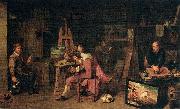 |
David Rijckaert
|
|
David Ryckaert III, sometimes called The Younger (2 December 1612 (baptised) - 11 November 1661) was a Flemish painter.
A member of the Ryckaert family of artists, he was born and raised in Antwerp, the city in which he conducted his career and in which he died. He was the son of David Ryckaert II, grandson of David Ryckaert I, and nephew of Martin Ryckaert.
David Ryckaert was a pupil of his homonymous father; his work was influenced by the styles of Adriaen Brouwer and both David Teniers the Elder and David Teniers the Younger. Ryckaert is noted for large and often humorous genre pictures of farmers and landlords, and powerfully coloured still lifes. He also painted a range of other subjects, including religious pictures; his The Temptation of Saint Anthony (1650) is in the collection of the Palazzo Pitti in Florence.
|
|
|
|
|
|
|
|
|
|
|
|
|
|
|
|
|
|
|
|
|
|
|
|
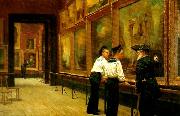 |
edward r taylor
|
|
Edward Richard Taylor RBSA (June 14, 1838 - January 11, 1911) was an English artist and educator. He painted in both oils and watercolours.
Taylor taught at the Lincoln School of Art and became influential in the Arts and Crafts movement as the first headmaster at the Birmingham Municipal School of Arts and Crafts from 1877-1903.
In December 1898, he founded Ruskin Pottery at Smethwick, Staffordshire. His son William Howson Taylor (1876 -1935) took over Ruskin Pottery after the death of his father. |
|
|
|
|
|
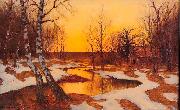 |
Edward Rosenberg
|
|
painted Solnedgang i vinterlandskap in 1921
Edward Rosenberg (1858-1934)Aliases: Axel Edvard John Rosenberg; Axel Edward John Rosenberg; Edvard RosenbergProfessions: Landscape painter. |
|
|
|
|
|
|
|
|
|








